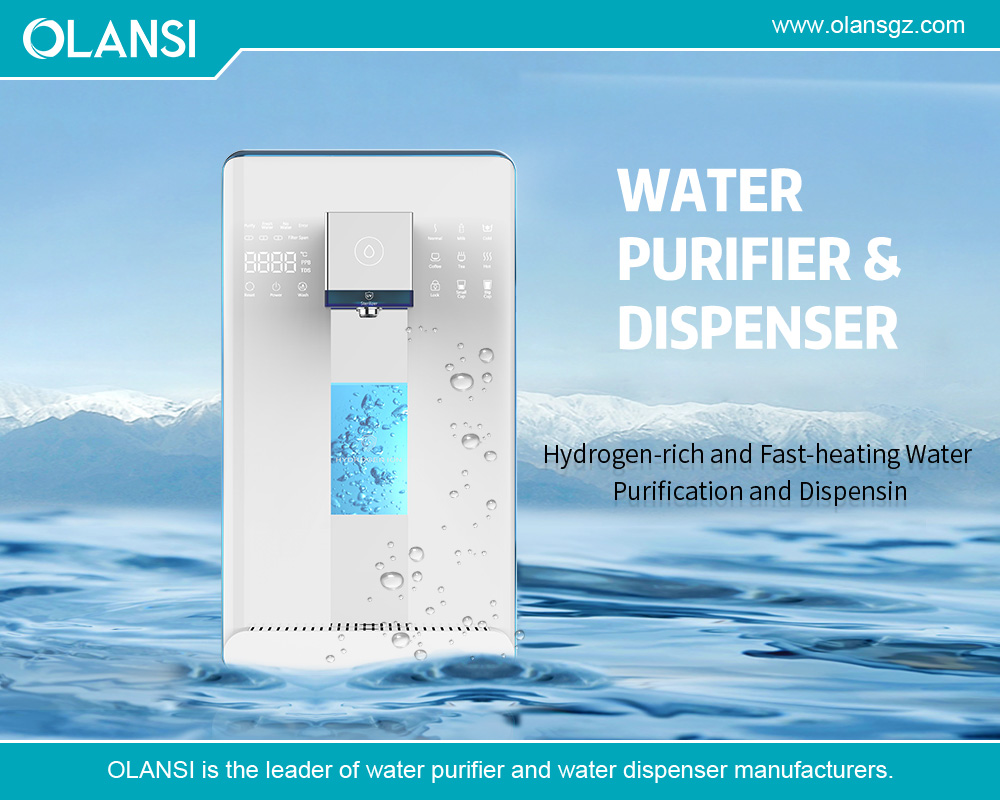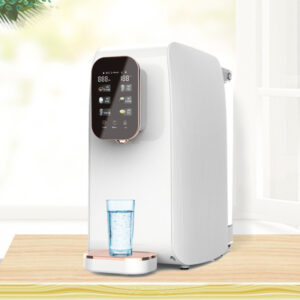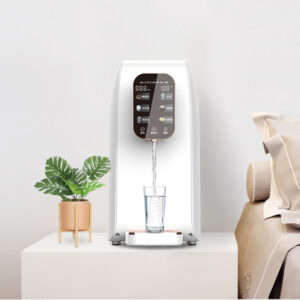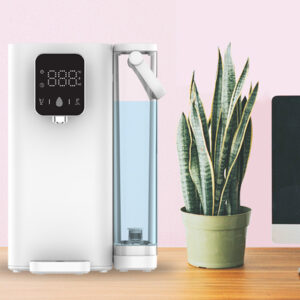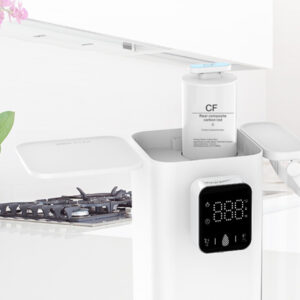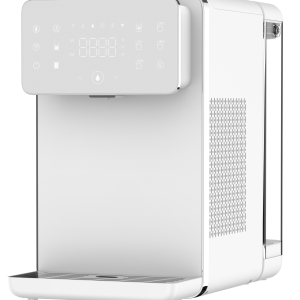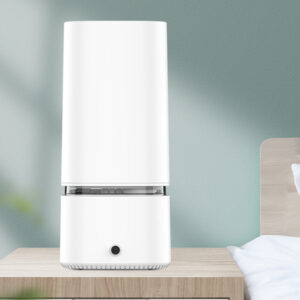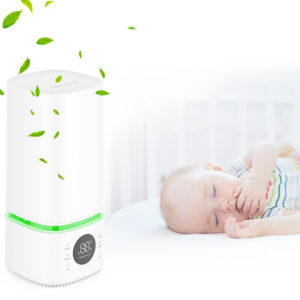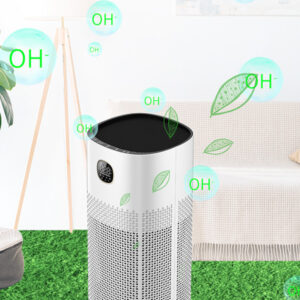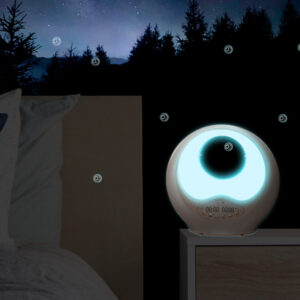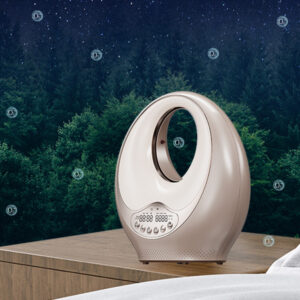What is Hot and Cold Water Dispenser Filtration System?
What is Hot and Cold Water Dispenser Filtration System?
In an era where access to clean, safe drinking water is paramount, hot and cold water dispenser filtration systems have emerged as innovative solutions for homes, offices, and commercial spaces. These systems integrate advanced filtration technology with temperature control mechanisms to deliver purified water at desired temperatures—hot for beverages like tea or coffee, and cold for refreshing drinks. Unlike traditional water coolers that rely on bottled water, these dispensers connect directly to a water source, filtering impurities on-demand while providing instant access to heated or chilled water.
The concept of water filtration dates back centuries, but modern hot and cold dispensers represent a convergence of filtration, heating, and cooling technologies. They address common concerns such as contaminants in tap water, including chlorine, heavy metals, bacteria, and sediments, while offering convenience and energy efficiency. This article delves into the technical aspects of these systems, exploring their components, operational principles, types, benefits, maintenance requirements, and future developments. By understanding these systems, users can make informed decisions about integrating them into their daily lives.
At its core, a hot and cold water dispenser filtration system is a multifunctional appliance that purifies water through multiple stages of filtration and then adjusts its temperature using built-in heating and cooling elements. These systems are designed to remove up to 99.9% of harmful substances, ensuring compliance with health standards like those set by the EPA or NSF. The filtration process typically involves mechanical, chemical, and sometimes biological methods, while temperature control relies on thermodynamic principles. As global water quality issues intensify due to pollution and aging infrastructure, these systems play a crucial role in promoting health and sustainability.
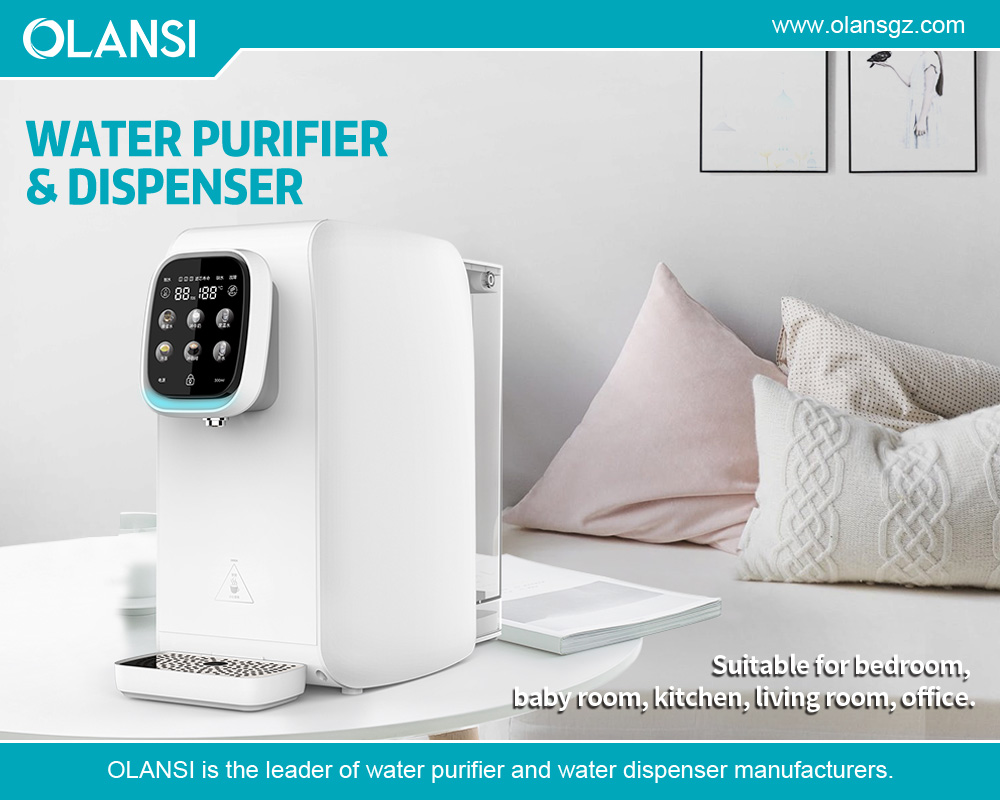
Key Components of the System
A hot and cold water dispenser filtration system comprises several interconnected components, each serving a specific function in the purification and temperature regulation process. Understanding these parts is essential for appreciating the system’s efficiency and reliability.
The filtration unit is the heart of the system. It usually consists of multi-stage filters, starting with a sediment pre-filter that captures large particles like rust, sand, and dirt. This mechanical filter, often made of polypropylene or ceramic, prevents clogging in subsequent stages. Next comes the activated carbon filter, which employs adsorption to remove organic compounds, chlorine, volatile organic chemicals (VOCs), and unpleasant odors or tastes. Activated carbon’s porous structure provides a large surface area—up to 1,000 square meters per gram—for trapping contaminants.
For advanced purification, many systems incorporate reverse osmosis (RO) membranes. RO uses a semi-permeable membrane with pores as small as 0.0001 microns to separate water molecules from dissolved salts, heavy metals like lead and arsenic, and microorganisms. The process involves applying pressure to force water through the membrane, leaving impurities behind in a concentrated brine solution that is discarded. Some systems also include ultraviolet (UV) light sterilizers, which emit UV-C rays at 254 nanometers to disrupt the DNA of bacteria, viruses, and protozoa, ensuring microbial safety without chemicals.
Temperature control components include a heating tank and a cooling reservoir. The heating tank, typically made of stainless steel, uses an electric heating element—similar to those in kettles—to raise water temperature to around 95-100°C (203-212°F). Thermostats and sensors maintain precise control, preventing overheating and ensuring energy efficiency. For cooling, a compressor-based refrigeration system, akin to a mini-fridge, chills water to 4-10°C (39-50°F). This involves a refrigerant cycle where a compressor pressurizes gas (e.g., R-134a), which then expands in an evaporator coil to absorb heat from the water.
Additional components include pumps for water flow, solenoid valves for dispensing control, and electronic circuit boards for user interfaces. Touch panels or buttons allow selection of hot, cold, or ambient water, while safety features like child locks and auto-shutoff mechanisms enhance usability. The system’s housing, often constructed from durable ABS plastic or stainless steel, ensures hygiene and longevity.
How the System Works
The operational mechanism of a hot and cold water dispenser filtration system can be broken down into sequential stages, combining fluid dynamics, thermodynamics, and chemical engineering principles.
Water enters the system from a municipal supply or well via an inlet valve. It first passes through the pre-filter to remove sediments, protecting downstream components. Flow rates are typically 0.5-2 gallons per minute (GPM), depending on the model’s capacity. The water then encounters the activated carbon stage, where adsorption kinetics play a key role. The contact time between water and carbon determines removal efficiency; slower flows yield better results.
In RO-equipped systems, a booster pump increases pressure to 40-80 psi, forcing water through the membrane. The permeate (purified water) is collected, while the reject stream is flushed away, maintaining membrane integrity. Post-RO, water may pass through a remineralization filter to add back essential minerals like calcium and magnesium, improving taste and pH balance.
Purified water is then directed to storage tanks: one for hot and one for cold. The hot tank uses resistive heating, where electrical energy converts to thermal energy via Joule heating (Q = I²Rt). Sensors monitor temperature, cycling the heater on/off to maintain set points. For cooling, the refrigeration cycle follows the vapor-compression principle: compression raises refrigerant temperature and pressure, condensation releases heat, expansion lowers pressure, and evaporation absorbs heat from water.
Dispensing occurs through separate spigots. When a user activates the hot or cold lever, a solenoid valve opens, allowing gravity or pump-assisted flow. Advanced models incorporate flow sensors and UV lamps at the outlet for final sterilization. Energy consumption varies; heating might use 500-1000 watts, while cooling requires 100-200 watts, with standby modes reducing overall draw.
The system’s efficiency is measured by metrics like total dissolved solids (TDS) reduction—often from 500 ppm to under 50 ppm—and recovery rate (permeate-to-feed ratio), typically 20-50% for RO systems. Waste water management is critical; some units recycle reject water for non-potable uses.
Types of Hot and Cold Water Dispenser Filtration Systems
Hot and cold water dispenser filtration systems come in various configurations to suit different needs and spaces. Classification is based on installation type, filtration method, and capacity.
Countertop models are compact and portable, ideal for small kitchens or offices. They connect to faucets via diverter valves and use gravity-fed filtration. Examples include systems with 3-5 stage filters, providing 1-2 liters of storage for hot and cold water. These are cost-effective but limited in output.
Under-sink or point-of-use (POU) systems install beneath counters, connecting directly to plumbing. They offer higher capacity, often with RO and UV integration, and dispense through dedicated faucets. These are discreet and efficient for high-usage environments.
Point-of-entry (POE) systems, though less common for dispensers, filter water for entire buildings before branching to hot/cold units. Bottled water alternatives use large reservoirs but incorporate filtration to purify refills.
Based on filtration, carbon-only systems are basic and affordable, suitable for lightly contaminated water. RO systems provide superior purification for areas with high TDS. UV-enhanced models add microbial protection, essential in regions prone to waterborne diseases.
Commercial-grade dispensers feature larger tanks (5-10 gallons) and robust components for heavy duty, while residential ones prioritize aesthetics and ease. Smart variants integrate IoT for app control, filter life monitoring, and usage analytics.
Benefits and Advantages
The adoption of hot and cold water dispenser filtration systems offers multifaceted benefits, spanning health, environmental, economic, and convenience aspects.
Health-wise, these systems ensure access to contaminant-free water, reducing risks of gastrointestinal illnesses, heavy metal toxicity, and chlorine-related issues. By removing pathogens and chemicals, they support immune function and hydration. Temperature options encourage consumption—hot water aids digestion, while cold promotes refreshment.
Environmentally, they reduce plastic bottle usage, mitigating waste and carbon footprints from bottling and transportation. A single system can replace thousands of bottles annually, conserving resources.
Economically, initial costs ( $200-1000) are offset by savings on bottled water and energy. Low maintenance and long filter life (6-12 months) minimize expenses. Energy-efficient designs, with insulated tanks and eco-modes, lower utility bills.
Convenience is unparalleled: instant hot water eliminates boiling wait times, while chilled water rivals refrigerators. Space-saving designs and easy installation enhance usability. Features like self-cleaning cycles and leak detection add reliability.
Compared to separate filters and kettles/fridges, integrated systems are more efficient, using less energy overall due to optimized components.
Maintenance and Troubleshooting
Proper maintenance is vital for optimal performance and longevity of hot and cold water dispenser filtration systems.
Filter replacement is the primary task. Sediment filters last 3-6 months, carbon 6-12 months, and RO membranes 2-3 years, depending on water quality and usage. Indicators like LED lights or apps signal changes. Replacement involves shutting off water, depressurizing, and swapping cartridges— a 10-15 minute process.
Cleaning entails periodic sanitization of tanks and lines using vinegar or manufacturer solutions to prevent biofilm buildup. UV lamps require annual replacement to maintain efficacy.
Troubleshooting common issues: Low flow might indicate clogged filters; replace them. No hot water could stem from faulty heaters; check thermostats or elements. Leaks demand immediate attention—tighten connections or replace seals. Strange tastes suggest expired filters or bacterial growth; flush and sanitize.
Professional servicing annually ensures compliance and detects issues like scale buildup in hard water areas, mitigated by softeners.
Comparison with Alternative Water Systems
Hot and cold dispenser filtration systems stand out against alternatives like bottled water coolers, pitcher filters, or whole-house systems.
Bottled coolers offer convenience but incur recurring costs and environmental drawbacks. Pitchers are inexpensive but slow and limited in capacity, lacking temperature control.
Whole-house filters purify all water but don’t provide instant hot/cold dispensing. Standalone RO units require separate heating/cooling appliances, increasing complexity.
Dispensers excel in integration, offering a one-stop solution with superior filtration and user-friendly features.
Future Trends and Innovations
The future of hot and cold water dispenser filtration systems lies in smart technology and sustainability. IoT integration will enable remote monitoring, predictive maintenance, and water quality alerts via apps. AI could optimize filtration based on real-time contaminant detection.
Advanced materials like graphene membranes promise higher efficiency and lower waste. Eco-friendly refrigerants and solar-powered options will reduce environmental impact.
Customization, such as adjustable mineralization or flavored infusions, will cater to preferences. Integration with smart homes for voice control and automation is on the horizon.
As water scarcity grows, these systems will incorporate recycling features and higher recovery rates.

Conclusion
Hot and cold water dispenser filtration systems represent a sophisticated blend of purification and convenience technologies, addressing modern water needs effectively. By understanding their components, operations, and benefits, users can harness these systems for healthier, more sustainable lifestyles. As innovations continue, they will undoubtedly become indispensable in ensuring safe, temperature-controlled water access worldwide.
For more about what is hot and cold water dispenser filtration system, you can pay a visit to Olansi at https://www.olansgz.com/product-category/water-dispenser/ for more info.


